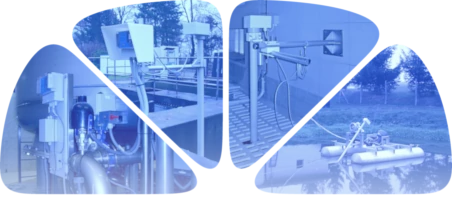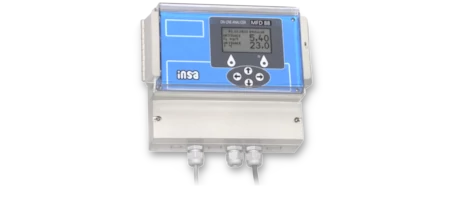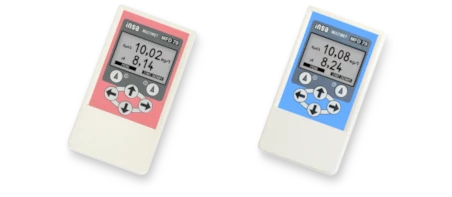pH value: Application examples
INSA analyzers and measuring sets are used in a wide range of applications in industry, water management, and in a number of other areas. Below you will find brief information and tips on some typical applications.
Measurement of pH in drinking water treatment plants
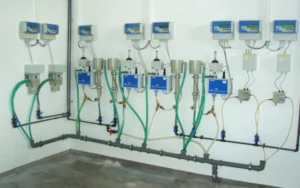
The pH value is a basic parameter monitored during the entire drinking water production process.
The pH value of the raw water entering the treatment technology is especially important in the case of surface water, the properties of which change significantly depending on a number of factors. If the measurement is to be reliable and without the need for frequent maintenance, it is necessary to use probes with automatic cleaning of the installed sensors.
When removing iron and manganese by alkalization, control of the pH value is absolutely necessary, but continuous measurement is rather difficult, especially where the concentration of manganese is high. For this application, the probes with automatic cleaning (SPO41ME, SPR41ME) should be used. Thanks to automatic cleaning and high-quality pH electrodes, INSA analyzers work for at least one month with the required accuracy (pH ± 0.1), even in the case of extremely high manganese values, and requiring no maintenance. It is also possible to use the built-in PID controller to maintain the pH value without an additional control system, even in more demanding cases (e.g. where a screw dispenser of calcium hydrate is controlled).
Maintaining an optimal pH value is also necessary to control the coagulation and flocculation processes. Considering that the water after the addition of flocculant contains a number of flakes that settle on the surface of the pH electrode, the probes with automatic sensor cleaning are preferred for such applications.
In most water treatment plants, the pH value is adjusted to the required level by adding milk of lime. For effective dose control, continuous pH measurement is essential. However, without effective automatic sensor cleaning, such measurement is often nearly impossible.
It is also important to measure the pH of treated water at the outlet of the treatment plant, as the pH value determines the effect of water on water distribution systems (such as corrosion or limescale deposits).
Measurement of pH at biological wastewater treatment plants
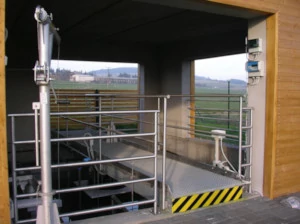
Given that the optimal function of biological processes takes place only in a narrowly defined range of pH values, the measurement of pH value at the entrance of the WWTP is also very important - especially where occurence of extreme pH values cannot be ruled out, possibly disrupting the entire cleaning process.
Measuring the pH at the inlet of the WWTP is quite difficult, because the water often contains a significant amount of fat and, depending on the properties of installed combs, also various fibrous substances. The optimal solution in these cases is the SPO41K probe with rounded cover, which protects the sensor against clogging with fibrous substances, ensures optimal water flow around the sensor, and also protects the sensor from damage.
An alternative solution may be the use of the SHI63 hanging probe with an integrated input block, in combination with the MUT14 clamp. This solution is more efficient in terms of price and space, but may prove to be less comfortable during later maintenance.
Sensor contamination is a challenge
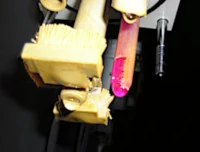
One of the main problems in the application of pH sensors is the contamination of the electrodes, causing changes in their properties, requiring frequent operator intervention (sometimes even within a few hours) and in some cases making the measurement virtually impossible. One typical example is pH measurement with dosing milk of lime, when the reaction of milk of lime with water is not yet completely finished. Similar problems arise with measurements in water with an aggressive iron content, on chemically or biologically heavily loaded surface streams and similar.
Problems of this kind are particularly typical for neutralization and precipitation processes. If the neutralization is carried out with milk of lime, then as a rule, the sensor quickly becomes clogged with lime incrustations, causing a deviation of the measured value. The pH value can deviate from the actual value by as much as one pH unit over the course of just a few hours. In order to ensure a correct measurement, the sensor needs careful cleaning several times a day.
For such cases, INSA offers automatic mechanical cleaning of sensors (SPO41ME and SPR41ME probes). This method of cleaning proved to be very effective and easy to operate, superior to other methods of cleaning. The system, well proven in dozens of different applications, works reliably even at low temperatures, with both chemical and biological water pollution. It is simple and reliable, without the need for additional chemicals.
In the picture: Measurement of the pH value during water alkalization with milk of lime, the condition of the sensor after four months of operation without manual cleaning.
Control of fermentation processes

For the optimal course of the fermentation process and the achievement of maximum yield, it is necessary to ensure the optimal pH value. The PID controller built into the pH analyzer can reliably control the dosing pumps even without additional control systems, so that the pH value is always optimal.
Multi-channel configurations are particularly suitable for these applications. One analyzer equipped with multiple PID controllers can simultaneously control up to four fermenters.
Thanks to the implemented external calibration mode, the calibration procedure in this kind of application is really simple.
Measurement of the pH value in fish farming
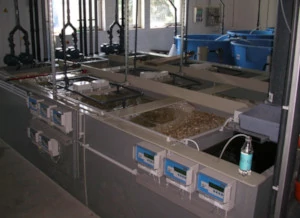
The pH value is also an important factor in fish farming. Above all, salmon-like fish are very sensitive to pH, which means the risk of fish death and thus large economic losses.
A fundamental problem of pH measurement, especially where there is a high density of fish (fish beds), is contamination of the pH sensor. In these cases, the best results are achieved with automatic cleaning (SPO41ME and SPR41ME probes).
Where this is not possible, for example for reasons of economy or space, a suitable alternative for less demanding cases is the SHI63 hanging probe equipped with a compatible pH sensor.
pH and ORP measurement in swimming pools
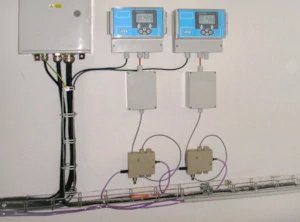
pH meters in these applications automatically maintain the optimal pH value by base or acid dosing. Usually the chlorine concentration is also measured and regulated at the same time. The requirement to monitor the ORP value is also common.
For these applications, the MFD88 analyzer offers a cost-effective multi-channel configuration. A single device then measures chlorine and pH (or chlorine, pH and ORP), even from several measurement points at the same time. It can also directly control the dosage without the use of other control systems.
pH measurement in surface water monitoring

The pH value is one of the basic parameters in surface water monitoring.
Considering that surface waters are more or less biologically active, contamination of sensors is often a problem in these cases. Biological growths on the pH electrode often cause a change in the pH value of up to 0.5 units. If daily manual cleaning is undesirable, automatic sensor cleaning is the right solution. Maintenance of the pH measurement is thereby reduced to a single-point calibration, usually at an interval of 4 to 6 weeks.
